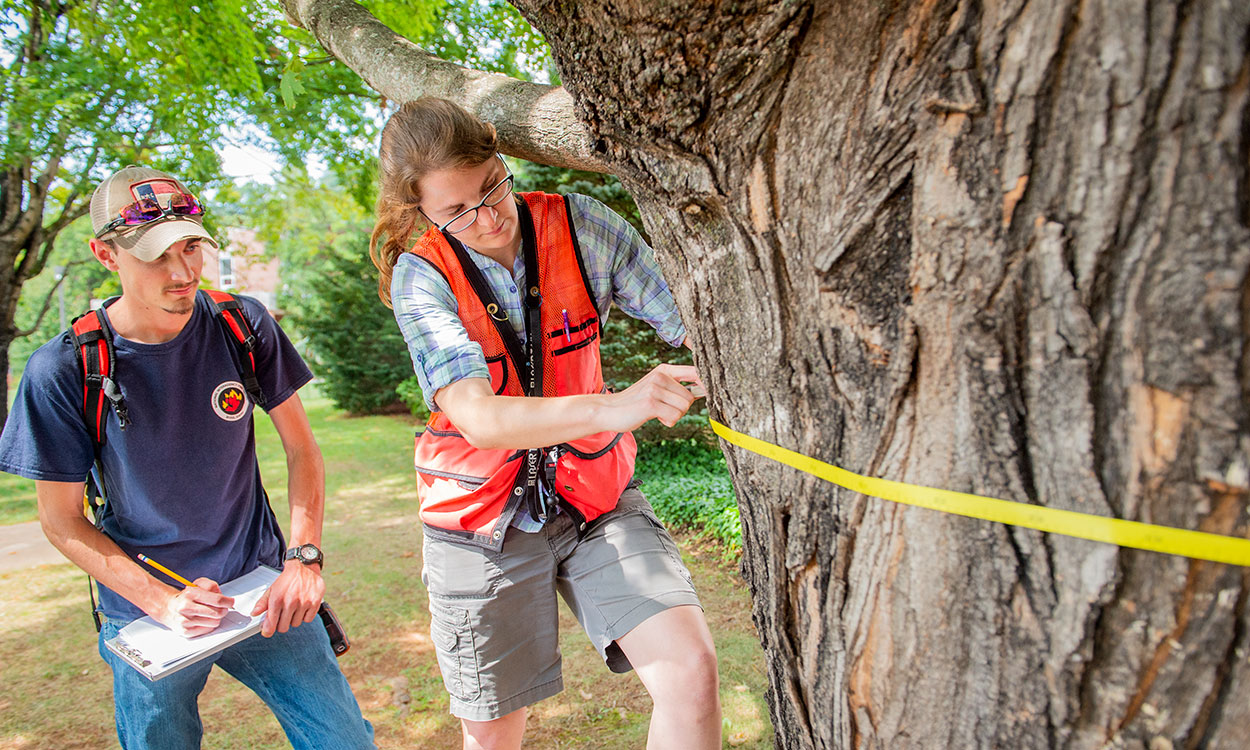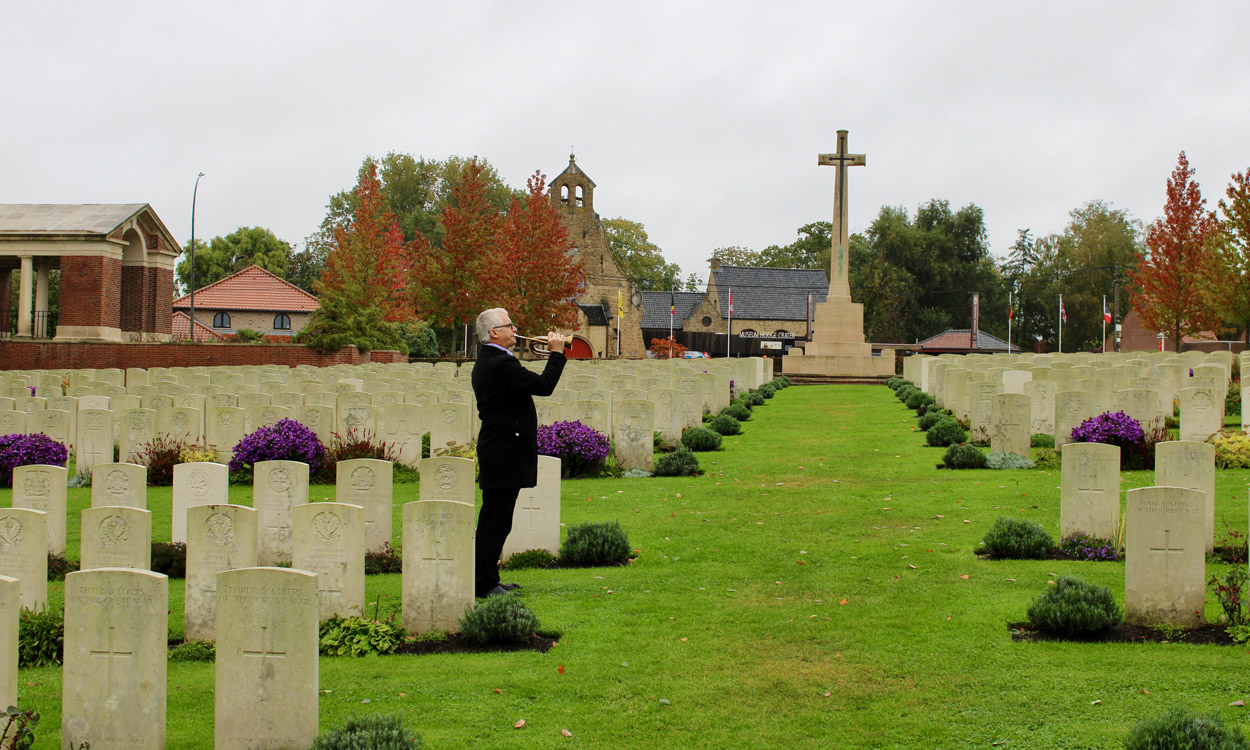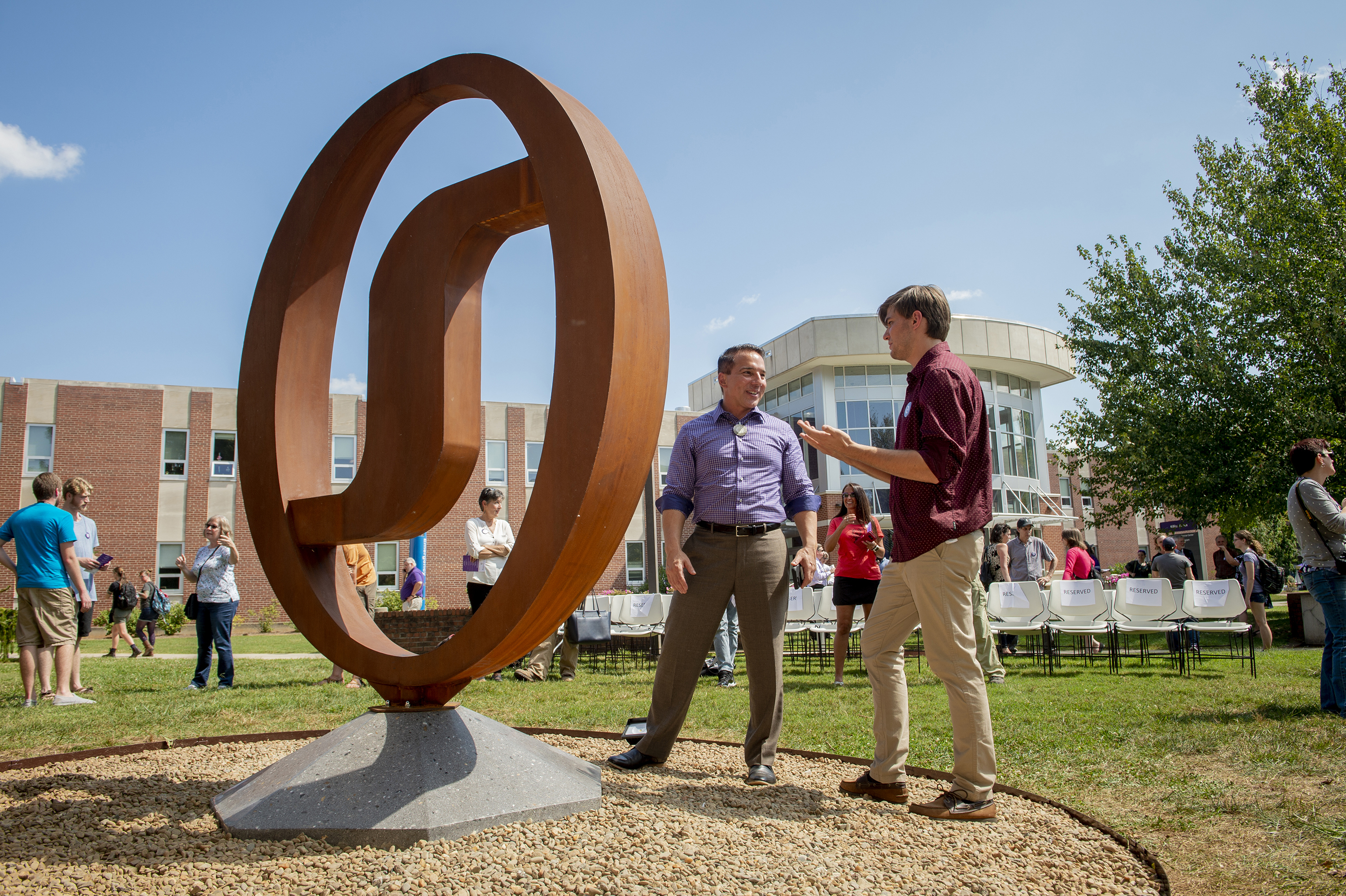Initiatives involving trees lead to university gaining Tree Campus USA status

Senior Jeremy Brendle (left) and junior Candice Moreau measure the diameter of one of WCU's 858 mature trees on the lower campus.
What started as a campus tree census and a smartphone app called “WCUTrees” has now led to Western Carolina University being honored with 2018 Tree Campus USA recognition.
Tree Campus USA, an Arbor Day Foundation program, honors colleges and universities and their leaders for promoting healthy trees and engaging students and staff in the spirit of conservation.
To be designated as Tree Campus USA, WCU had to meet five core standards – maintaining a tree advisory committee, a tree-care plan, dedicated annual expenditures for its tree program, an Arbor Day observance and student service-learning project. A total of 364 campuses across the country have received Tree Campus USA designation.
“The recognition is always a nice pat on the back for years of hard work by our grounds crew,” said WCU chief sustainability officer Lauren Bishop.” We also realized value when we went through the process of meeting the required standards, much of which we were already doing, and documenting these efforts. There are the obvious programming and educational benefits to the campus community, along with planning and operational gains. Tracking our tree data and formalizing our standards for tree selection, care, planting, maintenance, etc., allows us to better manage this important natural asset.”
WCU’s honor stems from a collaborative effort involving students in natural resources and conservation management, environmental science, computer information systems and graphic design, with the guidance of faculty and the assistance of an alumnus. The project was spearheaded by NRCM associate professor Diane Styers.
“The Tree Campus USA program helps colleges and universities establish and sustain healthy community forests,” Styers said. “Trees benefit our environment by providing us services like shade and clean air. Our campus can benefit from trees through savings on energy costs, and we can help reduce carbon dioxide in the atmosphere. It is an honor to be listed among the other “green” campuses across the country and something that everyone in our community can be proud of.”
The project began in the fall of 2016 when students used software to identify campus trees and place them on a map, excluding the densely forested areas of campus. From there, mature trees with a diameter greater than nine inches were measured, as well as unique species.
In the fall of 2017, the tree point file and the information that was collected was merged into a geographic information system. Meanwhile, initial work on the app was done by CIS professor Dan Clapper’s students before alumnus Chris Ward, a software engineer in Raleigh, took over. The WCUTrees app is now available in the Google Play Store and in Apple’s iTunes.
Last fall, NCRM students Andrew Myers, Candice Moreau, Jeremy Brendle and Joey Borders measured trees between 2 and 9 inches in diameter, as well as collected the heights of trees, to add to the app. In all, 1,225 mature trees were mapped with 89 unique species represented. The average size is 18.7 inches in diameter.
The project was funded by WCU’s Sustainable Energy Initiative and the North Carolina Forest Service’s Urban and Community Forestry Grant Program. The app also has been used by facilities management’s ground maintenance to record maintenance activities like pruning and pesticide application. The Office of Sustainability can use it to calculate the ecosystem services that campus trees provide, like carbon capture and sequestration, pollution absorption and shading for energy cost savings.
"I see this app to be an extremely beneficial tool for myself and the campus arborist to utilize in tracking the care needs of the trees on our campus," said grounds superintendent Roger Turk. "We will be able to impute what horticultural and arboricultural tasks have been performed for a specific tree and when it was carried out. It will also allow us to document any issues or concerns that we may need to monitor with a particular tree and to be proactive in its care to insure we are providing the necessary care to help enhance the life of the tree.
"The work that Diane Styers and her students have put into doing all the in-the-field, hands-on work required to make this app a reality is amazing. It’s a tool that the grounds department did not have the resources to create and we are fortunate that we will be able to utilize it from this time forward in our campus tree care program."

